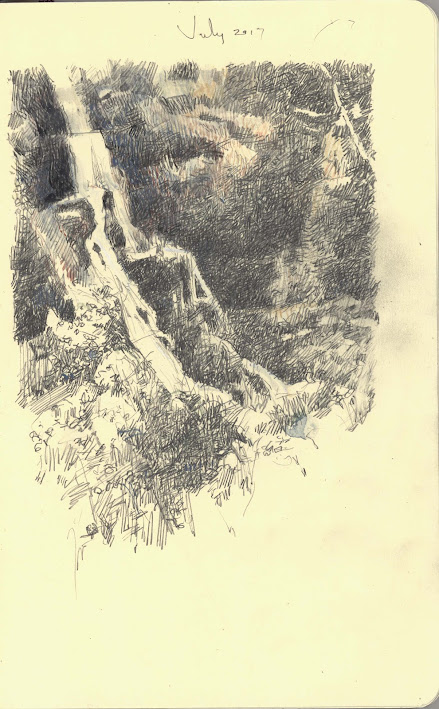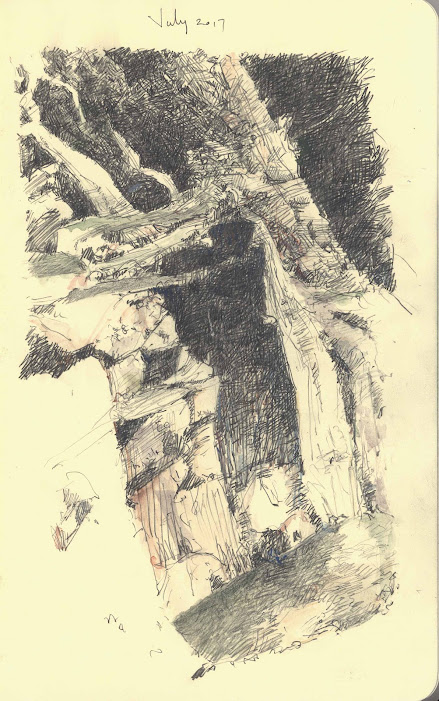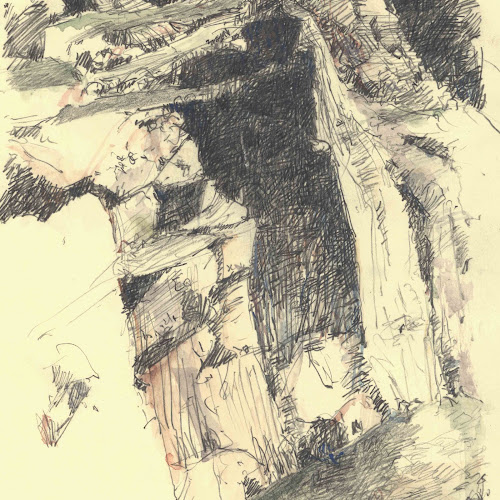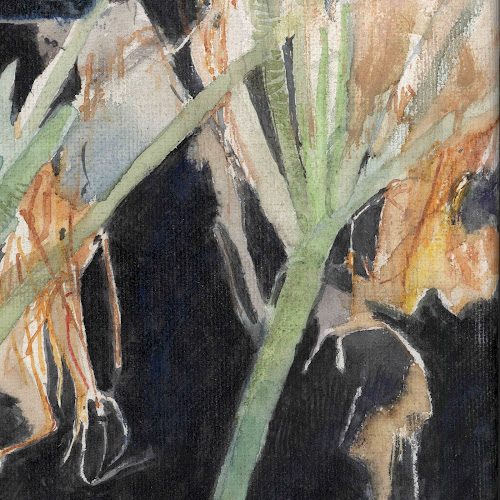James Brown
“Barron Falls”,
drawings 1 to 4, 2017
Sketchbook
drawings
Size: 21 x 13
cm
These drawings
were created over the course of several months, during my time spent in
doctors' and dentists' waiting rooms. I discovered that time passes quickly
when contemplating how water flows over rocks. While the concept of a
waterfall—specifically, a series of tiny cascades that contribute to the grand
Barron Falls at Kuranda in North Queensland, Australia—may seem simple, the
intricacies of capturing the water's route as it navigates lumps and hollows in
the rock face were truly engrossing.
To represent
the flow of water, I experimented with smudging pencil marks using my finger
and incorporating strokes of colour to convey the overall dynamics of each drawing.
Reference photographs provided insight into the broader scene, yet my interest
extended beyond mere representation. In my mind's eye, I was crafting a fantasy
of movement, with water flowing in various directions, ultimately destined for
its downward journey.


















































